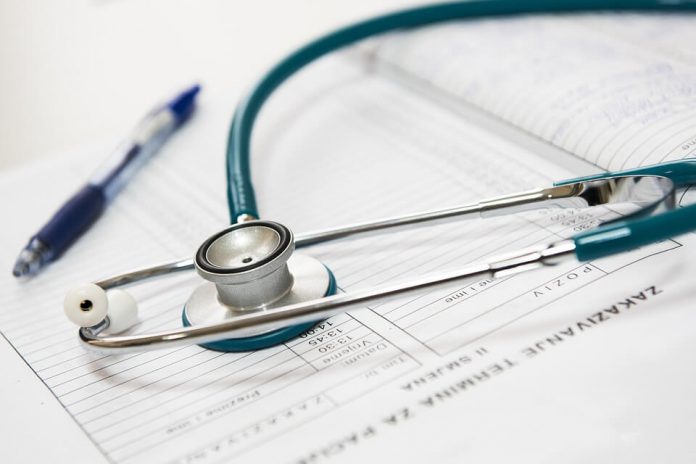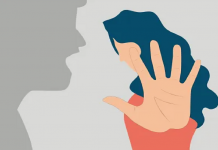This article is written by Yashaswi Srivastava, pursuing Certificate Course in Advanced Criminal Litigation & Trial Advocacy from Lawsikho.com.
Table of Contents
Introduction
The advancement in science and technology has greatly influenced solving crime across the globe. From collecting biometrics of people to making a dead body speak through various tests and diagnosis, we have come a long way. However, this kind of help involves various other factors like; trained staff, forensic experts, trained police personnel who can handle documents with proper care and caution and most importantly providing adequate funds and supplies to facilitate such processes. With the increase in sexual offences, the importance of timely medical help and assistance becomes very crucial. In this article, we look at the various aspects of why medical assistance is crucial when a sexual offence is committed.
What is medical evidence?
Medical evidence is the use of medical expertise in collecting evidence with regard to a crime that has taken place. Now, there are two widely used terms when we talk about medical evidence.
- Forensic, and
- Medico-legal.
Google describes forensic as ‘scientific tests or techniques used in connection with the detection of crime’. It collects, analyzes and preserves scientific evidence during the course of an investigation. On the other hand, among many definitions of medico-legal, with regard to offences, it is defined as a legal case requiring medical expertise when brought by the police for examination.
It involves tests and diagnosis on documents both real and document and on humans. Examples of such tests would be; DNA analysis, trace evidence, bodily injuries, traces of substances etc.
Importance of medical evidence in sexual offences
Provisions regarding sexual offences are divided into majorly two parts;
- Adults i.e., females over the age of 18 years,
- Children (hereinafter called adolescents) i.e., females under the age of 18 years.
The answer to the question as to what caused the death, what was the exact time when the person died, what kind of weapon was used can all be answered through medical expertise. The rules and regulations regarding adolescents and adults are different in cases of sexual offences. Consent is an important aspect when we come across tests like these. Adults for example have the capacity to understand the importance of these examinations and so their consent can be easily gained. On the other hand, the law strictly states that if an adolescent refuses to consent for such an examination before or anytime during the tests, the doctors must stop
then and there and she must be let go. The Hon’ble Supreme Court in the case of Samira Kohli v. Dr Prabha Manchanda and Another held that the doctor must inform the person giving the consent of the nature of the treatment, procedures, benefits of such examination and all the risks involved if any and that such consent is voluntary in nature.
The court in the case of Mafabhai Nagarbhai Raval v State of Gujarat stated that unless there is something inherently defective in the medical report, the Court cannot substitute its own opinion for that of the doctor. Furthermore, the importance of medical evidence was highlighted in the case of Pawan v State Of Uttaranchal (now Uttarakhand) where the medical evidence proved beyond reasonable doubt that the victim died of a homicidal death and that she was raped before being murdered. In one case, an accused who was tried for the rape of a married girl who was below 16 years of age was not convicted due to the absence of corroborative medical evidence.
Governing provisions in sexual offences
The adults are regulated under the Indian Penal Code, 1860 r/w the Code of Criminal Procedure 1973 and the Indian Evidence Act, 1872. The adolescents are regulated under the Protection of Children against Sexual Offences Act, 2012. A common point between the two statutes other than the fact that it deals with females is that in both of them, the name of the victim is concealed. This is to protect the victim’s dignity and identity from getting tarnished in the public domain. The medical provisions in sexual offences are also governed under the Indian Medical Council Act, 1956.
- Indian Penal Code, 1860- Sections 375 to 376E of the stated code defines and lays down offences and punishment for offences of rape.
- Criminal Procedure Code, 1973- Section 53A(1) states that examination of a person accused of rape shall be done by a medical practitioner whereas medical examination of a rape victim is governed under Section 164A. Consent for such examination under this Section is primarily important.
- A medical practitioner in the aforementioned Section must be one who is qualified under Section 2(h) of the Indian Medical Council Act, 1956.
- Amongst the other important provisions regarding rape in Evidence Act, 1872 one is Section 45 which is the opinion of the experts and Section 53A which states that previous sexual experience is not relevant in rape cases.
- Under Section 27(4) of the POCSO Act, 2012 states that the medical examination of a child shall be conducted by a woman doctor in the presence of her parents or guardian or in the absence of the two in the presence of a female nominated by the head of the medical institution.
Role of a medical practitioner
It is noteworthy that when we talk about medical evidence, the role of a medical practitioner becomes primary and extremely crucial. It is of such level that one tiny mistake can send an innocent person to jail or can even leave the victim deprived of justice. They perform a dual role
in such a situation. One is to provide psychological support and medical treatment to the victim and the second is to assist in collecting evidence and documenting them.
Under Section 357C of the Code of Criminal Procedure, 1973, all hospitals, public or private are bound to inform the police about any rape incidents that appear for medical attention before them and they are must immediately treat such victims free of cost. The following are the steps that they should follow when such a person knocks on the door;
➢ Providing first-aid to the victim,
➢ Providing them information about examination and collection of samples,
➢ Giving information about how the incident took place,
➢ Medical examination,
➢ Age estimation test when requested by the investigating agency,
➢ Collection of evidence,
➢ Documenting those evidence,
➢ Sealing, packing and labelling them,
➢ Treating any kind of injuries,
➢ Tests for diagnosing any STDs or pregnancy,
➢ Psychological counselling.
Role of an investigator
When the matter of medical and forensic evidence arises, one cannot neglect the role played by an investigator. It is because the investigator is the first person who reaches the crime place and gets hold of all of the available evidence at the crime scene. In cases where the victim has lodged an FIR with the police, it is then the responsibility of the investigator to ensure that the victim does not wash or change her clothes before going through a medical examination with the registered medical practitioner. Caution and extreme vigilance are needed by the investigator while he/she is collecting evidence. In case of an accused of a rape case, it is important to take him immediately for medical examination.
Medical evidence found in cases of sexual offence
There are different types of medical evidence that are found while examining a rape victim and rape accused. It further differs when a rape victim is an adolescent and when she is an adult. Factually, genital injury or non-genital injury occurs in about only 50% of rapes of females. Ideally, the aim of the doctors who conduct a medical examination of a rape victim should be:
- Medical tests and treatment of bodily injuries, and most importantly prevention of pregnancy and STDs.
- Providing solutions in case pregnancy is unavoidable. However, the Medical Termination of Pregnancy Act, 1971 allows for termination of pregnancy up to 20 weeks of pregnancy.
In one of the leading cases, the Bombay High Court allowed abortion of a 24-week old foetus because the pregnancy affected the mental health of the mother.
- Collection of forensic evidence on the person of the female including her clothes and any other item she had on her when the offence was committed. It also includes the assessment of the place where the offence took place.
- Psychological evaluation is another important aspect that doctors should take care of. Reaction after the offence differs from victim to victim. The most witnessed reaction is weeping, trembling with shock or quiescence or screaming. Others may include smiling which is basically a shock coping mechanism or even talkativeness.
- Recommendation for counselling sessions for crisis management and psychological support must also be made.
As seen in the aforementioned points, there should be a specialized team of doctors at work. Every hospital should have a psychologist who can understand and calm the victim when she is brought for her examination along with a forensic expert and a medical practitioner u/s 2(h) of the Indian Medical Council Act, 1956. These points become more pertinent in cases where the victim is a minor.
Guidelines for forensic medical examination in sexual assault cases
The Central Forensic Science Laboratory Directorate of Forensic Science Services which operates under the aegis of the Ministry of Home Affairs, Government of India released a fresh set of guidelines for forensic medical examination in sexual assault cases in 2018. A summary of these guidelines is as under:
- Consent is primary when it comes to the examination of a victim. A medical practitioner has to inform the victim of various tests involved in such medical examination and the benefits of such examination. Refusal to give consent will not mean denial to give examination. The matter must be handled with utmost caution when the victim is an adolescent.
- Detailed information should be given to the victim in case of an adult and if she is incapable of understanding the procedure then to her guardians/parents or if the victim is a minor then to her family of the tests and various procedures involved in a medical examination.
- A two-finger test is not allowed.
- A medical practitioner or his/her team must refrain from commenting about the victim’s past sexual experiences or any statement that body shames the victim.
Factors that determine the nature of forensic evidence
There are three major factors that determine the nature of forensic evidence collected. These are:
- Acts involved in sexual violence.
- The time-lapse between the act done and the examination.
- If the victim bathed/washed/changed her clothes after the act or not.
Specimens and samples to be collected
According to the 2018 guidelines, the following samples/specimens should be collected and the purpose of collecting them. For most of them, the aim is to have evidence of DNA profiling and the presence of semen.
- Clothes- Detection of blood, saliva, semen, vaginal secretion etc. on clothing and identification of the victim or accused by DNA profiling.
- Sanitary pad/tampons- To detect the presence of spermatozoa or semen and identification of accused by DNA profiling.
- Condom- Presence of semen (inner surface) and vaginal epithelial cells (outer surface).
- Evidence on the body- Presence of body marks, scratches, injuries, bite marks, redness etc.
- Head hair.
- Public hair.
- Vulva swab
- Vaginal swab.
- Cervical swab.
- Anal/rectal swab.
- Oral swab- To detect oro-genital contact between the victim and the accused.
- Penile swab and urethral swab- To corroborate penovaginal contact between the accused and the victim.
- Smear slides/vaginal, cervical, anal oral etc.- To detect the presence of semen.
- Nail clippings- To establish physical contact between the victim and the accused.
- Urine sample- For pregnancy test.
- Vaginal wash and aborted foetus (if any)- For DNA profiling and to detect the presence of semen.
- Blood- To detect the presence of alcohol and drugs and blood grouping and DNA profiling
Collection of the above samples within 24 hours of the commission of the crime is suitable for easy collection and preservation of evidence. Some of the evidence may vanish after 24 hours e.g., oral swab collection. In the case of S P Kohli v High Court of Punjab & Haryana, the Supreme Court noted that examination of smegma loses all importance after 24 hours of sexual intercourse.
In the case of Rafiq v State of Uttar Pradesh, it was stated by the Hon’ble Supreme Court that the absence of injury marks does not always mean the sexual act was committed with the female’s consent. Additionally, it is pertinent to note that collection of all this evidence is important and just collecting one or two of these samples is not sufficient.
Storage and preservation of evidence
- Dry evidence such as clothes, tampons, sanitary napkins etc. must be air-dried before packing them for the forensic laboratory. They should not be sun-dried or with a hairdryer.
- Swabs and their smear slides should also be air-dried before packing and they should be stored at room temperature.
- The specimens of hair and nails should be collected and stored on a white butter paper sheet which should be properly sealed and labelled.
- Foreign hair or clumps of hair should also be sealed, packed and labelled separately.
- Vaginal wash/urine should be collected and stored in a different leak-proof sterile container at a room temperature of 4°C without any kind of added preservatives.
- Blood samples should be collected and stored at 4°C and should be carried in refrigerated conditions.
Important instructions for medical practitioners
- Maintaining the integrity of the samples collected is important. It should not be compromised.
- Protective gears such as gloves, masks, aprons, and headgears should be worn to avoid contamination.
- Any kind of sneezing, coughing in and around the area where the examination is taking place must be avoided.
- Sterile or disposable devices for collecting samples should be used.
- Evidence that is biological in nature should not be exposed to high temperatures.
- All the evidence should be packed properly and carefully. They all should be labelled clearly. There should be no scope for any kind of ambiguity. Polythene bags should not be used.
- It is pertinent to observe, maintain and document the chain of command.
- Once the evidence is packed, it should have the following details clearly written over it;
- Name of the examinee.
- Description of the evidence collected.
- Date, time and place of evidence collected.
- MLR No./PMR No.
- FIR No.
- Name of the police station.
- Name and signature of the medical officer under whose supervision the examination was conducted.
- All forms duly signed in the stated guidelines should be sent along with the samples.
- The attested specimen seal and signature should also be sent along with the evidence.
- The registered medical practitioner should use the Sexual Assault DNA Evidence Collection Kit (SADECK) for the purpose of collecting evidence.
Critical analysis
Duly examining a rape victim helps medically build a strong case against the accused. Medical examination in the Nirbhaya Case was conducted while the victim was alive struggling for her life. Though she died, evidence collected from the person of her assisted in ensuring capital punishment for the perpetrators. Much of the above-listed evidence loses its value after a certain point in time which makes it more necessary to record what they have to say about the incident that took place. Consent of the victim is of utmost importance. If she refuses to appear for the medical examination at the time, she must be persuaded and should be made to understand the importance of this medical evidence. Therefore, you want those blood stains and shattered glass pieces to speak, you’ve to make sure they are spoken too soon otherwise your case will go down the drain if they are kept silent for long.
The 2018 guidelines are available only for females right now. However, victims of rape are not just female, they are men mostly found in prisons and people who recognize themselves under the LGBTQ+ community. We have neglected them for a very long time and now is the time to understand and sensitize ourselves and the system towards these victims also.
These guidelines could provide concrete support for genuine rape victims in getting justice. However, what lacks is implementation and funding. Irrespective of these impediments, efforts are made by professionals and organisations to provide adequate support with regard to forensic evidence collection and medical support systems.
Students of Lawsikho courses regularly produce writing assignments and work on practical exercises as a part of their coursework and develop themselves in real-life practical skills.
LawSikho has created a telegram group for exchanging legal knowledge, referrals, and various opportunities. You can click on this link and join:
 Serato DJ Crack 2025Serato DJ PRO Crack
Serato DJ Crack 2025Serato DJ PRO Crack











 Allow notifications
Allow notifications



